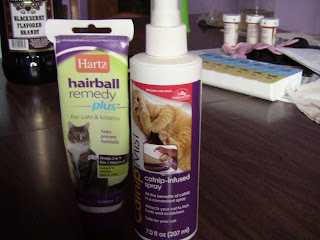How many of you like Kentucky Fried Chicken? I know my family loves it but it is getting way too expensive to buy this at the restaurant. So one day my youngest daughter did some research online and found me a mock version of Kentucky Fried Chicken. This recipe has now become our families favorite fried chicken recipe. I love cooking from scratch so this recipe was right up my alley. So, today I decided to share this recipe with my readers. This recipe has a lot of spices but it tastes great. Warning, If anybody is allergic to peanuts do not use the peanut oil for frying, use any other oil like corn oil or olive oil.
Mock Kentucky Fried Chicken
1 whole chicken cut into pieces. (or chicken breasts cut into thin slices)
½ Quart Peanut oil (or any oil you like)
2 egg whites whipped with ½ Tablespoon milk
1/3 Tablespoon salt
1/8 Tablespoon Thyme
¼ Tablespoon Basil
¼ Tablespoon Oregano
½ Tablespoon Celery Salt
½ Tablespoon Black Pepper
2 Tablespoons Paprika
½ Tablespoon Dried Mustard
1 Tablespoon Garlic Salt
½ Tablespoon Ginger
1 cup Flour
1. Take your unthawed chicken and cut into small pieces. I tried the whole chicken first and liked the chicken breasts cut into thin pieces better. No bones and less time to fry the chicken.
2. In a small bowl whip your eggs whites and milk together and set aside.
3. In a bigger bowl mix all your spices and flour together and set aside.
4. In a large deep skillet pour your ½ Quart of oil in. Heat your oil up. With a meat thermometer or candy thermometer heat your oil to 300 hundred degrees.
5. When your oil is heated, take your chicken pieces and dunk them in your egg and milk mixture.
6. Next, dunk your chicken into your spices and coat the chicken patting the flour mixture around your chicken.
7. Place your chicken pieces into the 300 hundred degrees oil and start frying them. You can use the oil two times before you need to replace the oil.
8. If you are using the whole chicken pieces your will have to cook them for 20 to 30 minutes. Taking your tongs flip the pieces several times until the chicken comes out golden brown. I used thin pieces of chicken breasts cut into nuggets and strips and I fried them for 10 to 20 minutes.
9. When the chicken is done frying place on a plate with paper toweling to drain off some of the oil.
10. If you have any leftovers just place in a 350-degree oven for 15 to 20 minutes to reheat them back up. They come out just as crispy as if you had just fried them up.
When chicken is on sale stock up and cook yourself some Kentucky Fried Chicken you can make at home for less than half the price you pay at the restaurant. My family loves this recipe thanks to my daughter. I find myself making this recipe 2 to 3 times a month with no complaints from anybody. This recipe is a little time-consuming to make but well worth the wait. I hope you enjoy my daughter's recipe for Kentucky Fried Chicken from Suzie Homemaker.


























